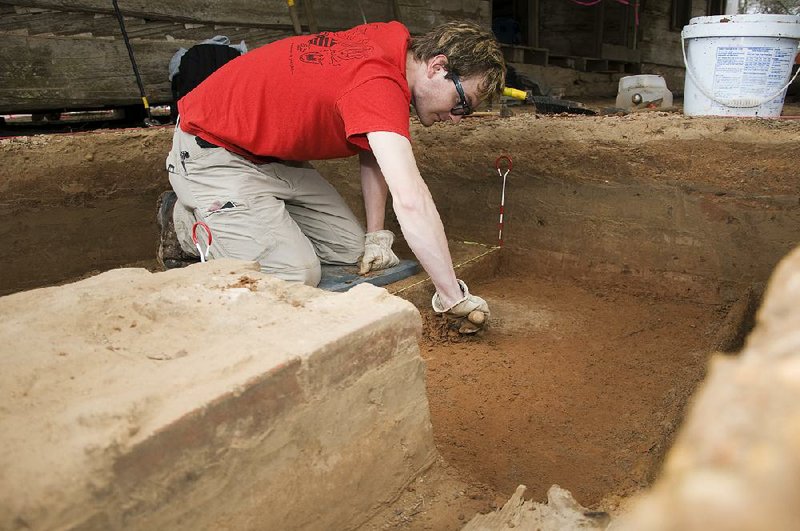DREW COUNTY - A little at a time in several 2-meter square pits, volunteers scraped away the earth, which was carried off in a bucket and carefully screened, revealing bits of bone, crockery, bottles and lots and lots of rusty nails.
Archaeology enthusiasts from around the state were spending their spring break, March 24 to 30, searching for the remains of a kitchen at the Taylor Plantation on Bayou Bartholomew.
The two-story dogtrot building of hand-hewn logs was built about 1845 and occupied for almost 100 years. The University of Arkansas at Monticello now owns the building and surrounding property.
Jodi Barnes, station archaeologist with the Arkansas Archeological Survey at UAM, who oversaw the dig, explained that the university’s aim is to restore the building and make it part of the Southeast Arkansas Heritage Trail. With that in mind, she planned the dig to find where the original outdoor kitchen and front porch had been.
Barnes said that very close to the house a midden (or layer) of food and pig bone remains had been found.
Another test unit later revealed a pier and some type of water or gas pipe, which was possibly part of the kitchen. Other interesting finds were a doll head and marbles, “so there were definitely children” living at the plantation.
The week-long project was open to the public. Volunteers included college students, retirees and members of the Arkansas Archeology Society, archaeologists from other research stations and, for one day, about 65 4-H archaeologists.
As each 10-millimeter layer of dirt was removed from carefully mapped test units behind the house, bits and pieces of the plantation’s history were found. (Old pictures had shown a kitchen there.) They were bagged, tagged and recorded in a notebook of level records.
Records of each pit are meticulous and include notations of the color of dirt found in the pit, special features such as pipes or piers, and a profile of the walls of the pit showing changes in layers.
Volunteers are a valuable resource to the Arkansas Archeological Survey, and many have been trained through a two-week program that takes place every summer. This year’s training program in June is a collaboration among the U.S. Forest Service, the Arkansas Archeological Survey and the Arkansas Archeological Society. It will take place on a pre-historic site near Oden in Montgomery County. Along with excavating and lab work, trainees attend basic to more advanced seminars for certification in specialized areas.
Those interested in learning more about the archaeology training program or volunteering can call the Arkansas Archeological Society at (479) 575-3556.
Style, Pages 29 on 04/08/2014

